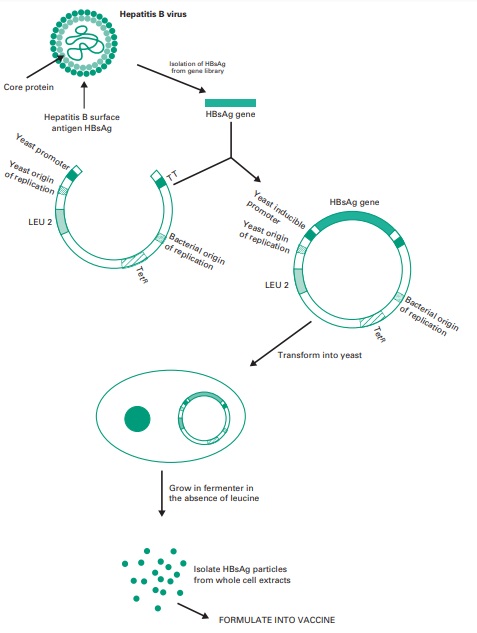Recombinant Hepatitis B Vaccine
| Home | | Pharmaceutical Microbiology | | Pharmaceutical Microbiology |Chapter: Pharmaceutical Microbiology : Recombinant DNA Technology
Before the development of recombinant DNA technology, two main strategies were employed for vaccine production: the generation of inactivated vaccines consisting of chemically killed derivatives of the infectious agent, and of attenuated vaccines, which are altered viruses and bacteria that are avirulent and can no longer cause disease.
RECOMBINANT HEPATITIS B VACCINE
Before the development
of recombinant DNA technology, two main
strategies were employed for vaccine production: the generation of inactivated
vaccines consisting of chemically killed
derivatives of the infectious agent, and of attenuated vaccines, which are altered
viruses and bacteria that are avirulent and can no longer cause disease. However,
these vaccines were potentially dangerous
as they could be contaminated with infectious organisms or revert
to a virulent form. To avoid
these problems, recombinant DNA technology has enabled the production of subunit vaccines
consisting solely of immunogenic
surface proteins which
can elicit immune responses without the risk of infection.
The hepatitis B virus (HBV)
vaccine was the first successful subunit vaccine developed. This virus
infects the liver and can cause serious damage. This virus
has a surface
antigen, HBsAg, which is found in blood of
infected patients
and has been found to elicit a significant
immune response. The gene coding
for this antigen
has been isolated from the virus
and cloned into a vector
that allows high
expression of the HBsAg protein
in yeast cells. Figure 25.11 shows the strategy
currently used for the
generation of recombinant HBV vaccine.
In this case,
as the 3.2-kb
genomic sequence of the HBV virus was known, the gene coding
for the HBsAg was directly cloned into a shuttle expression vector that replicates in both, E. coli for
the genetic manipulation steps, and in yeasts such as Saccharomyces cerevisiae for the production of the recombinant antigen. Transcription of the gene encoding HBsAg is driven
from a strong yeast promoter and is stopped
by a transcriptional terminator present
in the vector. The vector also has a leucine
biosynthesis marker for selection in yeasts and a tetracycline resistance marker for selection in bacteria. The yeast harbouring this plasmid can grow in fermenters in the absence
of leucine, generating large amounts of the antigen
that can subsequently
be extracted from the cells.


Related Topics
